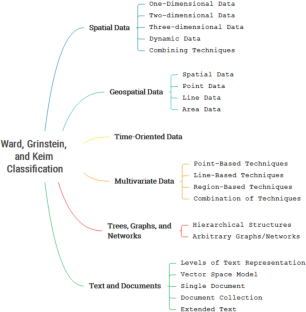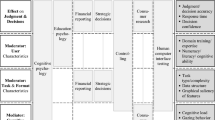Abstract
The human brain responds better to visual information when compared to plain text. In other words, our brain consumes visual information more easily than text-only content, which helps improve communication, sharing and retaining information, reducing misinterpretation, and clarifying complex information. However, most of the tools adopted for software project management are based on textual reports. The number of software projects that fail is huge, and the stakeholders’ lack of understanding of the project is among the reasons for project failure. The implementation of data visualization using techniques and tools for project management can help identify and prevent project issues such as unexpected budget increases, unrealistic deadlines, lack of clear goals, and success criteria. In this paper, we extend our previous work by evaluating the proposed data visualization extension for the Guide to the Project Management Body of Knowledge (PMBOK\(\text{\textregistered}\) guide) in terms of its applicability in software project management and alignment within the PMBOK guide. The results from the evaluation show that our proposal adds support to visual project management and helps to identify the status and progress of the project quickly and prevent future issues related to communication. Our proposal was also found to be helpful for less experienced software project managers.









Similar content being viewed by others
Availability of data and materials
All of the data is available upon request.
Notes
Available at Youtube: English and Portuguese versions.
References
Abad ZSH, Noaeen M, Ruhe G. Requirements engineering visualization: A systematic literature review. In: Requirements Engineering Conference (RE). IEEE, Beijing, CH; 2016. pp 6–15.
Baum D, Schilbach J, Kovacs P, et al. Getaviz: Generating structural, behavioral, and evolutionary views of software systems for empirical evaluation. In: 2017 IEEE Working Conference on Software Visualization (VISSOFT). IEEE, Shangahi, CH; 2017. pp 114–118, https://doi.org/10.1109/VISSOFT.2017.12.
Brereton P, Kitchenham BA, Budgen D, et al. Lessons from applying the systematic literature review process within the software engineering domain. J syst softw. 2007;80(4):571–83.
Clark W, Polakov WN, Trabold FW. The Gantt chart: A working tool of management. Ronald Press Company, New York; 1922.
Couto JMC. Métodos ágeis e pmbok: Uma revisão sistemática da literatura sobre o uso de abordagens híbridas no gerenciamento de projetos de software. Tech. rep., Faculdade Estácio do Rio Grande do Sul; 2016.
Couto JMC. Técnicas de visualização de dados em gerenciamento de projetos de desenvolvimento de software: proposta de extensáo do PMBoK. Master’s thesis, School of Technology - PUCRS University; 2018. http://tede2.pucrs.br/tede2/handle/tede/8115.
Couto JMC, Kroll J, Ruiz DD, et al. A pmbok extension proposal for data visualization in software project management. In: Proceedings of the 23rd International Conference on Enterprise Information Systems, ICEIS 2021, Online Streaming, April 26-28, 2021, Volume 2. SCITEPRESS; 2021. pp 54–65, https://doi.org/10.5220/0010454600540065.
Geraldi J, Arlt M. Visuals Matter! Designing and using effective visual representations to support project and portfolio decisions. Philadelphia, USA: Project Management Institute; 2015.
Grainger S, Mao F, Buytaert W. Environmental data visualisation for non-scientific contexts: literature review and design framework. Environ Model Softw. 2016;85:299–318.
Kirk J, Miller ML, Miller ML. Reliability and validity in qualitative research, vol. 1. Newbury Park, USA: Sage; 1986.
Kirkpatrick EA. An experimental study of memory. Psychological Review. 1894;1(6):602.
Kitchenham SB, Charters. Guidelines for performing systematic literature reviews in software engineering. Tech. rep., Keele University & Department of Computer Science, University of Durham; 2007.
Lemieux F, Salois M. Visualization techniques for program comprehension. Tech. rep., Defence R & D Canada – Valcartier; 2006.
Lu Q, Huang J, Zhang Q, et al. Evaluation on visualization methods of dynamic collaborative relationships for project management. Visual Comput. 2020;37:1–14.
Mattila AL, Ihantola P, Kilamo T, et al. Software visualization today: Systematic literature review. In: International Academic Mindtrek Conference, ACM; 2016. pp 262–271.
McDermott T. Data, information, knowledge, and leadership in complex project management. In: 2019 IEEE Technology Engineering Management Conference (TEMSCON); 2019. pp 1–8, https://doi.org/10.1109/TEMSCON.2019.8813672.
Morgan DL. The focus group guidebook, vol. 1. Newbury Park, USA: Sage publications; 1997.
Osterwalder A, Pigneur Y. Business model generation: a handbook for visionaries, game changers, and challengers. John Wiley & Sons, Hoboken; 2010.
Pfleeger SL, Kitchenham BA. Principles of survey research: part 1: turning lemons into lemonade. ACM SIGSOFT Softw Eng Notes. 2001;26(6):16–8.
Pmi I. Government Extension to the PMBoK Guide. Philadelphia, USA: Project Management Institute; 2006.
Pmi I. Software Extension to the PMBoK Guide. Philadelphia, USA: Project Management Institute; 2013.
Pmi I. Construction Extension to the PMBoK Guide. Philadelphia, USA: Project Management Institute; 2016.
Pmi I. A Guide to the Project Management Body of Knowledge (PMBOK\(\text{\textregistered}\) Guide). 6th ed. Philadelphia, USA: Project Management Institute; 2017.
Rauch M, Kienreich W, Aquila G, et al. A visual approach to project and portfolio monitoring. In: 2013 17th International Conference on Information Visualisation. IEEE, London, UK; 2013. pp 313–318.
Roam D. Unfolding the Napkin: The hands-on method for solving complex problems with simple pictures. New York, USA: Penguin; 2009.
Shahin M, Liang P, Babar MA. A systematic review of software architecture visualization techniques. J Syst Softw. 2014;94:161–85.
Singh R, Lano K. Defining and formalizing project management models and processes. In: Science and Information Conference (SAI), 2014. IEEE, London, UK; 2014. pp 720–731.
Stenberg G. Conceptual and perceptual factors in the picture superiority effect. Eur J Cognit Psychol. 2006;18(6):813–47.
Sviokla J. Swimming in data? three benefits of visualization. https://hbr.org/2009/12/swimming-in-data-three-benefit 2009.
Ward MO, Grinstein G, Keim D. Interactive data visualization: foundations, techniques, and applications. Natick, USA: CRC Press; 2010.
Williams PR. Visual project management. In: PMI\(\text{\textregistered}\) Global Congress 2015—EMEA, London, England. Newtown Square, PA: Project Management Institute 2015.
Winsor R. Diagonal network analysis–a new technique for project managers. Int J Project Manag. 1983;1(4):220–4.
Acknowledgements
We thank the study participants and acknowledge that this research was partially sponsored by Dell Brazil using incentives of the Brazilian Informatics Law (Law no 8.2.48, year 1991).
Funding
This research was partially sponsored by Dell Brazil using incentives of the Brazilian Informatics Law (Law no 8.2.48, year 1991).
Author information
Authors and Affiliations
Contributions
JC developed the extension, conceived and designed the mapping study, the focus group, and the two surveys, analyzed the data, wrote the paper, prepared figures and tables, reviewed drafts of the paper. JK helped design the evaluation survey, analyzed the data, wrote the paper, prepared figures and tables, reviewed drafts of the paper. DR and RP reviewed drafts of the paper.
Corresponding author
Ethics declarations
Conflict of interest
The authors declare that they have no conflict of interest.
Ethical approval
Not applicable.
Consent to participate
Informed consent was obtained from all individual participants included in the study.
Consent for publication
Not applicable.
Additional information
Publisher's Note
Springer Nature remains neutral with regard to jurisdictional claims in published maps and institutional affiliations.
This article is part of the topical collection “Enterprise Information Systems” guest edited by Michal Smialek, Slimane Hammoudi, Alexander Brodsky and Joaquim Filipe.
Rights and permissions
About this article
Cite this article
Couto, J.C., Kroll, J., Ruiz, D.D. et al. Extending the Project Management Body of Knowledge (PMBOK) for Data Visualization in Software Project Management. SN COMPUT. SCI. 3, 283 (2022). https://doi.org/10.1007/s42979-022-01168-z
Received:
Accepted:
Published:
DOI: https://doi.org/10.1007/s42979-022-01168-z




